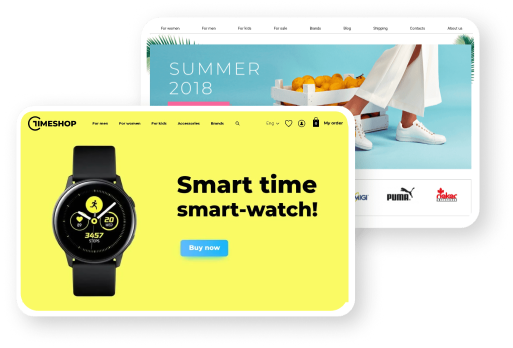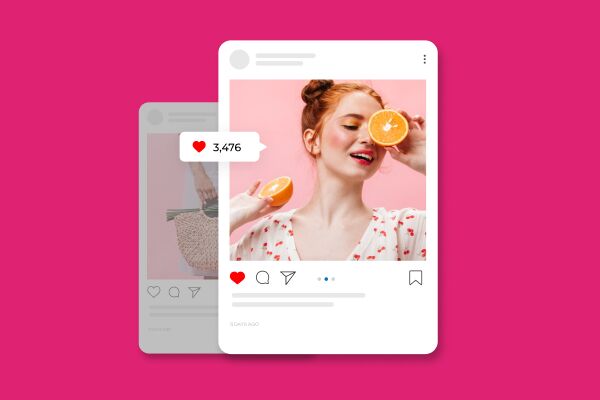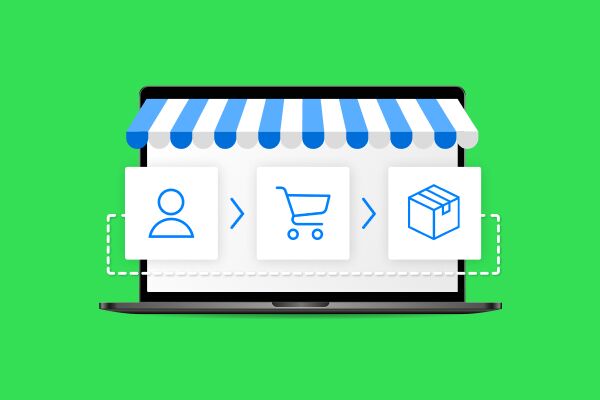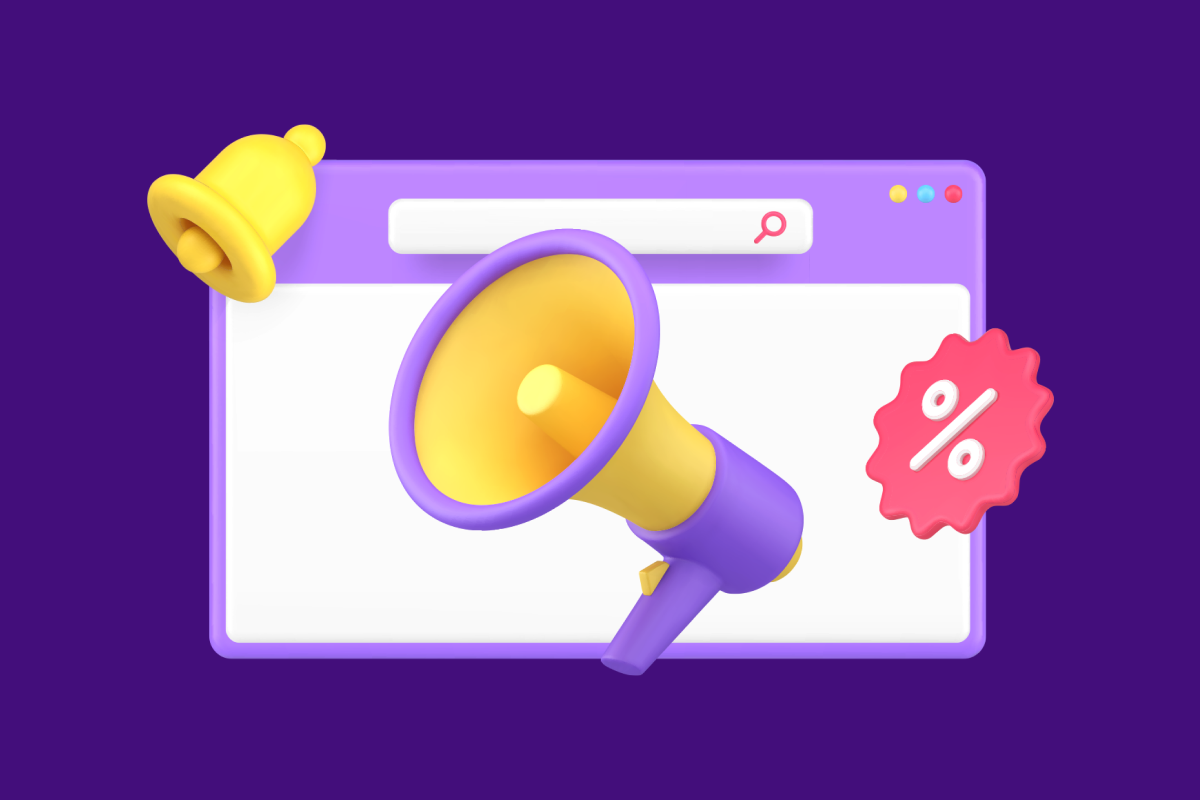Instagram operates based on algorithms that determine the visibility of posts in a user's feed. Understanding how these algorithms work will help you promote your Instagram more effectively. Learn more about this in our article.
Instagram is one of the most popular social networks of our time, and many online stores create pages there to use as a promotional channel. The key to effective promotion lies in Instagram's algorithms—understanding how they work will help you succeed.
In this article, we will explain how Instagram algorithms function, what influences their operation, and how you can successfully promote your store's page on Instagram.
How the Instagram Algorithm Works
The algorithm's task is to evaluate content from accounts a user follows and select posts that best match the user's interests. If you follow a thousand accounts, you won't see a thousand posts in your feed—the algorithm filters most of them out, leaving only the most engaging ones. By removing unnecessary content from the feed, Instagram aims to keep users on the platform as long as possible without boredom.
Only the social network's developers fully understand how the algorithm works, but experience using Instagram allows us to understand its mechanisms, at least in general. We can distinguish several main stages that posts go through on their way to success—eventually appearing in recommendations.
Engagement Assessment
A published post is shown to a portion of followers, and Instagram tracks their reactions to gauge engagement. Engagement is the sum of likes, comments, saves, and clicks on the "Share" button relative to the total number of followers. If users who see the post actively engage with it, Instagram considers the publication relevant and interesting.
Content Evaluation
Although Instagram primarily focuses on visual content, the algorithm also evaluates the textual content of posts. Based on this text, the platform identifies the topic, which is important when selecting posts according to user interests.
Profile Rating
The algorithm assesses the importance of the profile that made the post. Instagram observes how frequently users open, revisit, and interact with the profile—the more often this happens, the better it is for the account's reputation.
Getting into Recommendations
Based on the evaluation of the post, profile quality, content topic, and keywords, the publication can be featured in recommendations. For profile promotion, this is comparable to hitting the jackpot.
What affects the algorithm
User interests
User interests are the primary guide for the algorithm. Instagram attempts to adapt to these interests as closely as possible. It analyzes which posts the user likes, whom they follow, and what topics are their priorities. If your profile and content align with the user's interests, your posts will appear in their feed more frequently.
Relationship with the user
Instagram aims to show engaging content and posts from profiles important to the user. These can include family, friends, acquaintances, or accounts that receive special attention. According to Instagram developers, the social network determines a user's relationship with other profiles based on interactions such as likes, direct messages, search history, and real-life connections.
Posting time
Previously, the Instagram feed operated chronologically, showing posts by publication time. With the transition to the algorithm, the primary factor became post relevance, not freshness. However, Instagram still tracks when a user logs into the app.
If a user logs in at 8 p.m. and then again at 7 a.m., the algorithm checks only posts published within this interval, ranking them by relevance. All other posts remain unchanged.
Frequency of app usage
If the user opens the app once a day, the algorithm shows a curated selection of the day's most interesting posts. The content will be significantly filtered. If the user frequently visits and spends considerable time in the app, the algorithm will build the feed based on both relevance and chronology.
Myths about the Instagram algorithm
Photos and videos are rated differently
Photos and videos have equal value on the platform, so the algorithm doesn't differentiate based on content type. Everything depends on user interests: if users prefer videos and engage with them more, they'll see more video content. If they prefer photos, more photos will appear in their feeds.
Frequent postings affect the algorithm's performance
Instagram neither penalizes nor rewards frequent posting. According to the developers, Instagram aims for diverse content in user feeds. If a profile posts too frequently and the content isn't relevant or engaging, those posts simply won't appear in feeds.
Business and personal profiles are treated differently
From the algorithm's perspective, all profiles are treated equally—business and personal accounts undergo identical evaluations.
The algorithm favors accounts that publish stories
The only way to gain the algorithm's trust is by posting high-quality, engaging content. The format—whether it's posts, stories, or live broadcasts—does not influence how the platform evaluates your content.
Tips for promoting your online store page
Build relationships with your followers
Creating quality content is essential, but gaining audience loyalty is even more important. The Instagram algorithm shows 90% of the content from "friends and family," but this is just a conventional term used for a group of profiles. The "friends and family" category includes all profiles important to the user, with whom they regularly interact—your online store can become one of these profiles.
To achieve this, comment on your followers' posts, respond promptly to their comments, and encourage them to engage in conversations with you. Gradually, your account will become part of the user's close circle, and they will start seeing your posts more often.
Use direct messages
The phrase "sent you a DM" can annoy many users, but online stores can't entirely avoid it because it's one of the simplest ways to shift communication to personal messages. Instagram's algorithm considers direct message interactions, which helps build stronger relationships with users.
Don't delete or hide posts
Keeping posts on your account is especially important for engagement metrics. Posts serve as a kind of "bookmark" for social media users. Sometimes account administrators archive promoted posts to tidy up their profiles and avoid responding to inquiries when the promotion is no longer relevant.
This is a mistake: users often don't immediately like or follow but instead save the post featuring the product and make a purchase later. Hiding the publication means potentially losing a customer. It's essential to analyze post statistics, paying close attention to the number of saves, and never hide or delete posts with at least one save. The best solution is simply editing the text.
Publish during your audience's active periods
The Instagram app collects statistics on your audience, allowing you to determine when your subscribers are most active. The timing of your posts and your frequency of app usage directly influence the social network's algorithm. By choosing the right moment to post, you can maximize audience engagement.
Deciding when to publish should be based on experience and experimentation. It might be better to post just before peak activity or directly during it. Testing different strategies will help you identify the most effective times to connect with your audience.
Choose your words wisely
We've already noted that Instagram evaluates the content of posts and determines their topics. The topic should match your audience's interests. If you run an online furniture store, write about chairs and sofas, but don't create posts on psychology. Your entire profile should focus on one topic, making it easier for the algorithm to understand and categorize your content.
Cooperate with bloggers
Advertising through bloggers provides access to thousands of potential customers. Additionally, bloggers are opinion leaders whose recommendations users trust. Collaboration with bloggers will increase your store’s visibility, boost your profile, and attract new customers.
Avoid unfair promotion methods
Artificially inflating subscribers, likes, or comments will not help promote your account; instead, it may trigger penalties from Instagram. The algorithm monitors abnormal growth in these metrics, and manipulating them won’t make your profile genuinely popular. Focus on improving engagement naturally.
Conclusion
The success of your store's Instagram promotion depends on your ability to create relevant content and maintain strong relationships with your audience. Even if the algorithm changes in the future, authentic engagement with your followers will remain a crucial factor.





